

Virtual Reality (VR) is the name of the game this year at E3 2015. While a lot of you at home may be hearing about Final Fantasy 7‘s remake or Star Wars Battlefront, most of what I’m hearing on the showroom floor has to do with VR. The Oculus Rift is, hands down, winning in terms of presence, but it’s not the only show in town.
Now, to preface this, I’ve had some time with VR before. I’ve tried the Rift several times and Morpheus, and I’m someone who wears glasses and gets motion sickness quite easily. VR is one of those things I never thought I’d enjoy but, when done correctly, has added a lot for me.
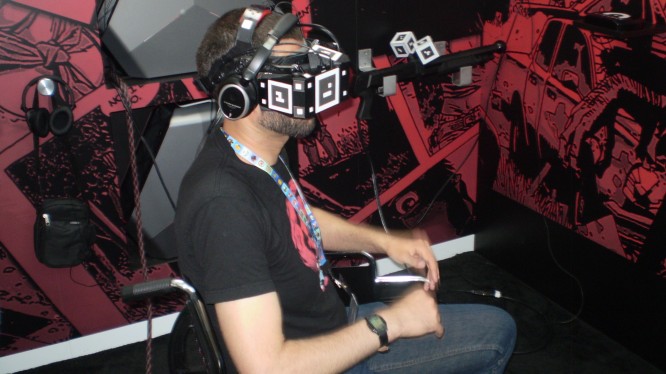
No where was this more clear than with Overkill’s The Walking Dead. It’s no accident that I’m sitting in a wheelchair. I’m not using it for my real self, but in the game, you play a surgeon who amputated your own leg, wheeled out by a nurse that refused to leave you, but later abandoned by someone who just wanted the keys to your car. The world is set quite well and should remind you of any haunted house set in a hospital with one big change: looking down at “your” leg is a constant reminder of your limitation. It’s jarring to see just the one but know you have two. I actually constantly moved my non-amputated leg in real life just to make sure it was there. It’s wonderfully immersive, and I can see this sort of thing lending itself well to RPGs (especially of the online nature).
The problem with the demo was with the StarVR headset that was used. The line for the game constantly came to a screeching halt as the headsets had constant issues. Worse yet, the headset wasn’t set up for people like myself who need glasses. I was pressured to not use mine, but I’ve tried doing it before at Tokyo Indie Fest 2015, and it was a mistake. I’m simply too blind to use VR without my glasses. However, we were able to get the headset on me. The problem was that it blurred my vision, badly. I tried peaking out the edges of my glasses to see if anything was better but it wasn’t. The blur sometimes resulted in double vision, which is pretty bad when a game’s asking you to shoot targets. My demo didn’t end well, as I had run out of ammo long ago and was left to fend for myself.
If other versions of the headset work with glasses or can correct vision, it might be ok. The StarVR headset was fairly lightweight and didn’t seem too different from the various Oculus Rift models I’ve tried except that most of the Rift models allowed me to use my glasses.
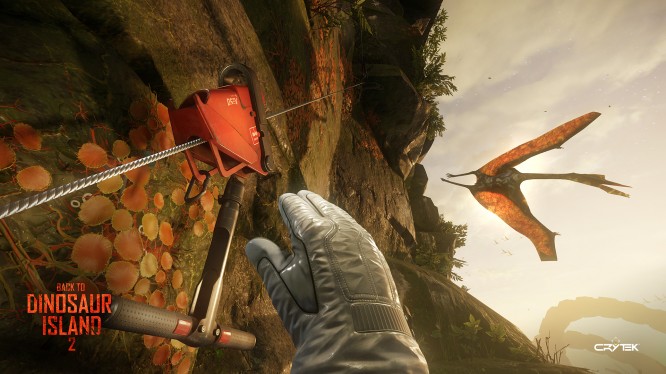
Crytek’s Back to Dinosaur Island 2 is actually just a tech demo that’s expanding into Robinson: The Journey, which we don’t really have any details on. The dino tech demo, though, used the latest version of the Rift, Crescent Bay, though I believe I was using the proto-type, not the consumer version of the game. I’ve heard they’re quite similar though, and while the fit was a bit tight (we didn’t adjust the straps to make putting the headset on easier), it was very light weight and comfortable.
The demo was much of what you’d expect from Crytek: visually awesome, fairly intuitive, and able to bring out a bit of adrenaline. While you’re simply using mechanized devices to climb a cliff wall, the dinosaurs don’t always seem friendly. There were several times I wondered if combat might actually happen, though it didn’t. No outright aggression, just constant squawking and wing flapping, but it made me feel as if I should feel a breeze. It was another case of the VR preparing my mind to feel something but lacking it was slightly jarring. First world problems, right? But I won’t complain too much. Truthfully, I have a fear of falling, so I had to release myself from the cliff just once to see what would happen. Sure enough, the short drop (it blacked out to avoid any death) immediately triggered a falling sensation and a flicker of fear. But Crytek knows games, which makes showing off the power of VR much easier.

AntVR, on the other hand, used their own tech demo to show off their headset. Big mistake. While the headset itself was light weight and allowed me to use my glasses, the demo didn’t make good use of VR tracking. I had to constantly turn in my chair to adjust my in game movement, which naturally brought about my motion sickness. I stuck with it as long as possible, but perhaps due to lack of sleep, my tolerance was quite low and pulling off the headset didn’t help much (nor did me having to run to make my next appointment!). The controller I used was simple enough, and could be used with my right or left hand, but the way it was set up was quite poor. As someone who doesn’t know a lot about the specs (as I’m sure most readers are the same), I can’t pinpoint the exact problem, but everyone I spoke to agreed: the fault was most likely with the game, not the headset itself.
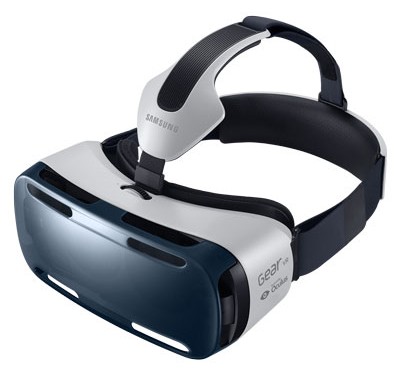
Perhaps the best surprise of the day came from Samsung’s Gear VR Innovator Edition I used during my hands on with the Manus VR glove. While the tech demo I was using wasn’t anything graphically amazing, the headset immediately stood out. Though I couldn’t use my glasses, the dial on the top (pictured above) allowed me to change the visual settings until I could actually clearly see the screen without my glasses. I was honestly impressed. It’s just as lightweight as the most recent Rift model I used, and perhaps more comfortable. The Rift already seems like the industry standard, but Samsung could possibly change that if they play their cards right.
For those of you keeping score at home, you’ll probably notice I didn’t mention Morpheus. Honestly, I have only used it once at Tokyo Game Show 2014, and I wasn’t impressed, at all. It felt rather cheap, practically like 3-D glasses or, for those who prefer a sound comparison, cheap earbuds. I haven’t been able to get into the Morpheus area this year, but unlike the Rift, I’m not hearing people walk away with positive impressions unless they’re a personality.
In general, I like VR. I think it works better for games than 3D works for movies because gaming is interactive on a one on one level. While movies may affect an audience, there’s a big difference between watching a movie alone and watching it with other people. Games are similar, but you’re not just working on passive level. Even in auto-pilot, a gamer is acting as an agent of the game world and impressing her will onto it within the confines of the game’s narrative. Taking my leg or putting me in physically uncomfortable environment via VR adds new depth to both realism and immersion.
That being said, when done incorrectly, VR is a terrible, potentially messy experience. While indie developers are seeing a lot more interest in their work these days, those who venture into VR territory could quickly become untouchable if they cannot adapt their game in a way that ensures audiences don’t become sick while playing. In some ways, VR could actually set the indie movement back.
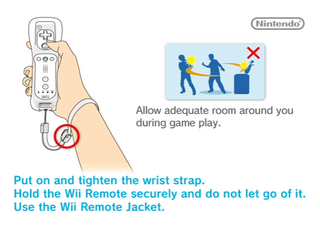
I say in “some ways” because there’s a constant theme going on in every VR demonstration: someone is assisting you. Putting on some of these headsets is a bit difficult. With sound and vision impaired, a lot could go wrong for VR players who live alone. Missed phone calls are the least of your worries. During one Walking Dead VR demo, a participant forgot that the VR gun we were given was only for firing, not melee combat, and started violently swinging his gun, enough so that many of us thought the nearby crew may have been in danger (or that the participant had a mental condition). I know I avoided several near smacks when walking around some VR demos. As I live in Japan, where the Nintendo Wii (U) tells users who aren’t impairing their vision to watch out for nearby objects, I wonder if the technology will be well received in that region. Oh, and do I have to mention what might happen in an emergency? If your sense of smell can’t pick up smoke from a fire, VR could pose a serious risk in an emergency situation.
Price wise, most of the numbers are resting around $200. That’s not too bad for gamers, but at the same time, I’ve heard the Rift at least needs a decent amount of power that non-gamers may not possess. The price of a new computer and the Rift may be limiting for some people, so even if you want to explore Wander if your non-gamer significant other, it may not be possible yet. AntVR’s headset is supposed to be all in one, usable with phones and priced at $250, but I’ve seen no one outside the company itself using the headset for demos.
Without a doubt, VR is “winning” at E3 2015. Some amateur games/tech demos are really showing how there will need to be some training involved in adapting to the new hardware, but the overall experience seems positive. There are sadly some issues for those of us with glasses, but the major players (Oculus and Samsung) seem to have us covered. The fact that, out of seemingly no where, we’ve gotten several competing companies bringing VR out at the same time seems to indicate that this could be the next big thing, but there are a few issues they’ll also be introducing. It’ll be interesting to see how the new tech effects our hobby.
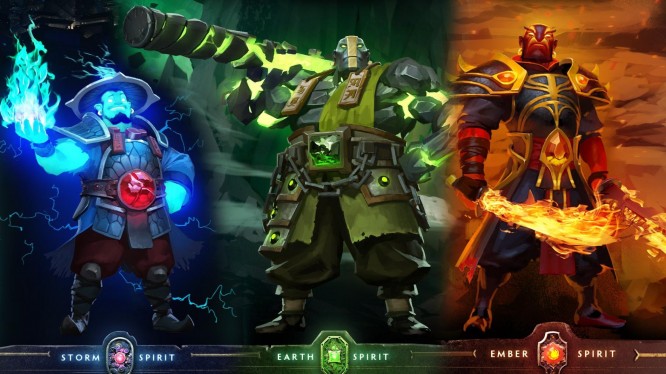



 Games Like: Hearthstone .
Games Like: Hearthstone . Eorzean Evening Post: Celebrating Final Fantasy XI in Final Fantasy XIV .
Eorzean Evening Post: Celebrating Final Fantasy XI in Final Fantasy XIV . Battlefield Hardline: What's the Best Gun in the Game?
Battlefield Hardline: What's the Best Gun in the Game?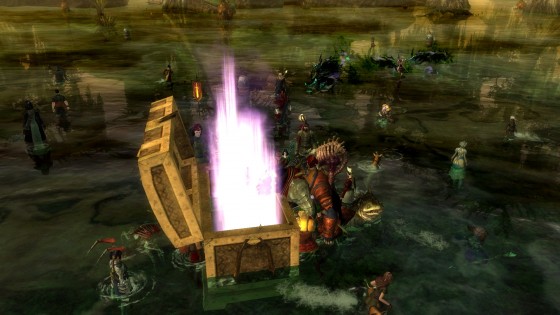 Guild Wars 2 Inventory Management Problems in Heart of Thorns .
Guild Wars 2 Inventory Management Problems in Heart of Thorns . League of Legends Worlds 2014 Group Stage 2 Roundup .
League of Legends Worlds 2014 Group Stage 2 Roundup .